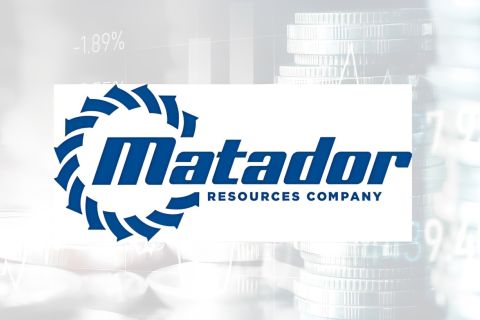Presented by:
An E&P’s power to reject its midstream agreements in bankruptcy creates great leverage for the company to negotiate better terms with its midstream provider when faced with distress. Whether the E&P actually has this power in bankruptcy has been a hot topic during the past five years. Courts around the country have reached inconsistent conclusions. In some cases, courts have excused E&Ps from out-of-market agreements and granted them leverage to renegotiate with their midstream providers. In other cases, courts have denied an E&P this leverage and forced it to honor the terms of its agreement.
The different outcomes of these cases have raised questions about how midstream companies and their E&P providers can structure their agreements to enhance the predictability of how such agreements will be treated if the E&P goes through bankruptcy. Unfortunately, no silver bullet exists, but parties do have a few tools that they can use to make the treatment of their midstream agreements in bankruptcy more predictable.
The power to reject
When a company becomes a debtor in bankruptcy, it has a choice about what to do with its contracts and leases. If a contract is executory—both parties still owe material obligations to one another—the debtor can elect to assume the contract (reaffirming it) or reject it (disavowing itself of the agreement). If the debtor assumes the contract, it must cure all defaults under the contract by payment or otherwise and provide adequate assurance that it will continue to perform under the contract going forward. If the debtor rejects the contract, the rejection is treated as a breach as of the petition date. The other party to the contract will have an unsecured claim in the bankruptcy case for damages that arise from the breach, and the debtor can generally disavow itself of future obligations under the agreement.
The Bankruptcy Code gives the debtor this powerful tool so that it can use the bankruptcy process to shed itself of burdensome contracts and get a fresh start on the other side. The decision of whether to assume or reject a contract is in the debtor’s business judgment, and courts frequently honor the debtor’s judgment in this regard.
“At a minimum, the midstream agreement should include express, clear and unambiguous language that the E&P’s dedication and commitment is an interest that runs with the land.”
The power to reject burdensome agreements is not without limits. For example, real property interests are typically not subject to rejection in bankruptcy. Midstream companies frequently finance the construction of the gathering system with the expectation of recovering that cost through a future dedication of production from the benefitted land, with the expected result being that the E&P’s dedications to the midstream company are real estate transactions tied to the land, rather than pure contractual covenants that a debtor can reject.
This arrangement, which is really part financing and part operational, attempts to take the midstream agreement out of the executory contract realm and place it into the real property realm. The issue for the courts turns on whether the E&P’s dedication to the midstream company is a “covenant that runs with the land” (i.e., an interest in real property) that precludes the E&P from rejecting the agreement in bankruptcy. These arrangements have been heavily litigated in the past few years, with different courts applying the real property laws of the states where the properties are located, yielding different results after a fact-intensive inquiry.
The requirements for a covenant to run with the land vary from state to state, but in most cases, four elements must be satisfied:
- The covenant must be enforceable;
- The parties must have intended that the covenant run with the land;
- The covenant must “touch and concern” the land; and
- Privity of estate must exist.
Most cases in bankruptcy have turned on the second, third and fourth requirements. Based on these cases, a number of lessons have been taught in structuring and drafting midstream agreements so that they have a better chance to survive scrutiny.
The intent
The parties must intend that the covenants run with the land. At a minimum, the midstream agreement should include express, clear and unambiguous language that the E&P’s dedication and commitment is an interest that runs with the land. But clear and unambiguous language of intent, while necessary, is not sufficient.
In one case, a court held that the intent requirement was not satisfied even though the agreement contained express language that the covenants run with the land. The agreement also provided that the exclusive remedy for a breach of the agreement to deliver or purchase the specified quantity of gas would be money damages.
The court held that if the parties truly intended for the dedication covenants to run with the land, they would have excluded a liquidated damages remedy and would more likely have tied the remedies to the dedication itself, focusing on specific performance or injunctive relief.
Another factor in the court’s decision was that the agreement also provided that it would constitute a forward contract (to gain additional benefits under the Bankruptcy Code). The court held that designating the agreement as a forward contract belied the expressed intent that it be a real property interest that runs with the land. A general provision that the contract is binding on successors and assigns has also been held, on its own, an insufficient expression of intent that the convents run with the land.
The midstream agreement must include at a minimum express language that the E&P’s dedication and commitment is a real property interest that runs with the land. But the agreement should also be more holistically consistent with an agreement that conveys a real property interest and require that the dedication be recorded in the real property records. Provisions that treat the mineral interests as a commodity or limit a party’s right if the other party breaches the agreement to pursue money damages could risk undermining the agreement’s expressed intent.
Touch and concern the land
Whether or not courts find that the mineral interest dedication touches and concerns the land often turns on whether the court views the mineral interest as one pertaining to the minerals in the ground or the severed and produced oil and gas.
Courts have rejected the notion that the mineral dedications touch and concern the land when the dedications do not affect the physical use of the real property itself or are not closely related to it. For example, one court found that the dedication was for severed minerals because it was for all oil and gas produced instead of an assignment of specific interests in the oil and gas leases themselves.
Courts have also viewed minimum volume commitments and liquidated damages provisions as indicia of personal property interests rather than dedications of real property that run with the land. In some cases, surface easements granted to build gathering systems have helped courts find the touch and concern element satisfied, though other courts have stated that the easement dealt with surface rights only when the property interest in question was really the minerals in the ground. This requirement has proven difficult for midstream companies seeking to prevent the E&P from rejecting their agreements in many cases.
Midstream agreements should be structured as much as possible to tie the dedications to the mineral interests in the ground and the land itself, rather than solely to the produced minerals or the surface estate. The creation of easements to build and maintain gathering systems and language expressing that the dedication applies to interests in the leases themselves and the producer’s interest in all oil and gas reserves “in and under the land” have helped some courts get over the hump of finding that the dedication touches and concerns the land. But other courts have not found this language to be convincing.
Privity of estate
States differ in how they look at the privity requirement, and courts have reached different conclusions based on similar facts. But privity is generally viewed on horizontal and vertical axes. Most litigation in the bankruptcy context has addressed horizontal privity. Horizontal privity can be satisfied when the original contracting parties share simultaneous interests in the same property.
While courts are not uniform in their application of horizontal privity in midstream agreements, courts have found horizontal privity to exist when the producer and the midstream company enter into the covenants at issue in connection with a simultaneous conveyance to the midstream company of a real property interest, such as an easement or gas gathering or water disposal system, and the interest is not somehow severed from the underlying mineral estate.
On the other hand, horizontal privity has been found absent when easements and rights-of-way were conveyed long after a dedication was executed or when the easements and rights-of-way granted on the surface estate were distinct from the dedication of the severed mineral estate. Vertical privity generally exists when a successor to the original contracting party is bound by the covenant and can claim its benefits and be subject to its burdens.
“The midstream company may consider seeking a lien on the hydrocarbons as part of the real estate and once severed. The creation of the lien will secure the E&P’s obligations under its midstream agreements and may provide the midstream company with additional leverage in a bankruptcy case.”
The conveyance of an interest in the land should be done contemporaneously with documenting the midstream transaction. Any easements should be granted simultaneously with the dedication of mineral interests and with furtherance of the development of such interests. To the extent that the surface estate has not been severed from the underlying mineral estate, the unity of the real property interest may further help satisfy the horizontal privity requirement.
Additional solutions
Because bankruptcy courts are not uniform in how they approach covenants that run with the land, other tools may exist for E&P and midstream companies to enhance the predictability of how their midstream agreements will be treated in bankruptcy. No solution is perfect, but creative thinking and collaborative negotiation may help enhance predictability. Additional considerations include:
- Create a lien on the hydrocarbons. The midstream company may consider seeking a lien on the hydrocarbons as part of the real estate and once severed. The creation of the lien will secure the E&P’s obligations under its midstream agreements and may provide the midstream company with additional leverage in a bankruptcy case. This solution, however, will face resistance from reserve-based lending (RBL). To the extent a lien is permitted under an E&P’s RBL credit facility, the RBL lender will likely insist that the midstream company’s lien is deeply subordinated to the RBL and require a strong subordination and intercreditor agreement. Moreover, a secured creditor in bankruptcy is only secured to the extent that the collateral has sufficient value to cover the debtor’s obligations to it. If the senior loan is underwater, any subordinated lien position will have no value in bankruptcy.
- Grant a nominal overriding royalty interest. The E&P may consider granting a nominal overriding royalty interest to the midstream company. This grant may help satisfy the touch and concern and horizontal privity requirements.
- Require E&P to post letter of credit. The midstream company may consider requiring the E&P to post a declining letter of credit in its favor. This solution may require clearing similar hurdles with an RBL lender, and posting of cash to backstop the letter of credit will likely tie up cash reserves and availability under the RBL. Obtaining a letter of credit may also prove an expensive endeavor.
- Tie gathering/transportation fees to price of hydrocarbons gathered/transported with extended term. Tying fees to commodity prices would disincentivize an E&P from rejecting its midstream agreement as the fees paid to the midstream company would adjust downward in a declining market. This solution, however, may prove non-economic for the midstream company if commodity prices fall below a certain threshold. This risk could be mitigated with a price floor, and the midstream company could benefit from the upside in a high-price environment. The economics of this arrangement would need to be carefully modeled.
Surviving bankruptcy
Little uniformity has developed in the case law on what parties can do to enhance the predictability of how their midstream agreements will be treated in bankruptcy. Courts presented with similar facts have reached different conclusions. As a result, certainty cannot be guaranteed. But midstream companies can increase the chances that their agreements will survive bankruptcy with careful structuring and drafting to avoid crossing certain guardrails established under existing case law. However, since different jurisdictions approach the analysis differently and absent a lien on the minerals in place, there can be little certainty that a particular agreement will survive a motion to reject.
Adam L. Hirsch is a partner in the finance and acquisitions department of Davis Graham & Stubbs LLP and represents clients across the U.S. in all aspects of bankruptcy, business restructuring and related transactions. Christopher Richardson is a partner in the finance and acquisitions department of Davis Graham & Stubbs LLP and focuses on mergers and acquisitions, corporate financing and restructuring work.
Recommended Reading
Matador Stock Offering to Pay for New Permian A&D—Analyst
2024-03-26 - Matador Resources is offering more than 5 million shares of stock for proceeds of $347 million to pay for newly disclosed transactions in Texas and New Mexico.
From Restructuring to Reinvention, Weatherford Upbeat on Upcycle
2024-02-11 - Weatherford CEO Girish Saligram charts course for growth as the company looks to enter the third year of what appears to be a long upcycle.
NOV's AI, Edge Offerings Find Traction—Despite Crowded Field
2024-02-02 - NOV’s CEO Clay Williams is bullish on the company’s digital future, highlighting value-driven adoption of tech by customers.
Hess Corp. Boosts Bakken Output, Drilling Ahead of Chevron Merger
2024-01-31 - Hess Corp. increased its drilling activity and output from the Bakken play of North Dakota during the fourth quarter, the E&P reported in its latest earnings.
The OGInterview: Petrie Partners a Big Deal Among Investment Banks
2024-02-01 - In this OGInterview, Hart Energy's Chris Mathews sat down with Petrie Partners—perhaps not the biggest or flashiest investment bank around, but after over two decades, the firm has been around the block more than most.






